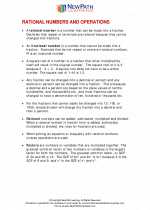Understanding Exponential Functions
Definition
An exponential function is a mathematical function of the form f(x) = a^x, where "a" is a constant number called the base, and "x" is the exponent.
Properties of Exponential Functions
- Growth or Decay: Exponential functions can represent either exponential growth or decay, depending on the value of the base "a".
- Horizontal Asymptote: The graph of an exponential function never crosses the x-axis, and it approaches the x-axis as x approaches negative or positive infinity.
- Domain and Range: The domain of an exponential function is all real numbers, and the range is all positive real numbers if "a" is greater than 1, or all positive real numbers except 0 if "a" is between 0 and 1.
- Asymptotic Behavior: Exponential functions exhibit asymptotic behavior, where the function approaches but never reaches a certain value.
Graphing Exponential Functions
To graph an exponential function, it's helpful to identify the key points, such as the y-intercept and a few points along the curve. Additionally, understanding the behavior of the graph as x approaches negative or positive infinity is important for accurately sketching the graph.
Applications
Exponential functions have numerous real-world applications, such as modeling population growth, radioactive decay, compound interest, and exponential growth of technology or disease spread.
Common Exponential Functions
- f(x) = 2^x
- f(x) = 10^x
- f(x) = e^x (where e is the base of the natural logarithm, approximately equal to 2.71828)
Exponential Growth and Decay Formulas
Exponential functions can be used to model growth and decay processes using the formulas:
- Growth: f(x) = a * (1 + r)^x, where "a" is the initial quantity and "r" is the growth rate as a decimal.
- Decay: f(x) = a * (1 - r)^x, where "a" is the initial quantity and "r" is the decay rate as a decimal.
Exponential Functions in Calculus
In calculus, exponential functions are studied in depth, particularly in the context of the natural exponential function (f(x) = e^x) and its derivative and integral properties.
Practice Problems
Here are some practice problems to test your understanding of exponential functions:
- Solve for f(x) if a = 3 and x = 4 in the exponential function f(x) = a^x.
- Graph the function f(x) = 2^x and identify the y-intercept and asymptotic behavior.
- Calculate the value of f(x) at x = 3 if a = 5 in the exponential function f(x) = a^x.
Conclusion
Exponential functions are powerful mathematical tools that are widely used in various fields. Understanding their properties, graphing techniques, and real-world applications is essential for mastering this important topic in mathematics.
.◂Math Worksheets and Study Guides Eighth Grade. Rational numbers and operations

 Worksheet/Answer key
Worksheet/Answer key
 Worksheet/Answer key
Worksheet/Answer key
 Worksheet/Answer key
Worksheet/Answer key
